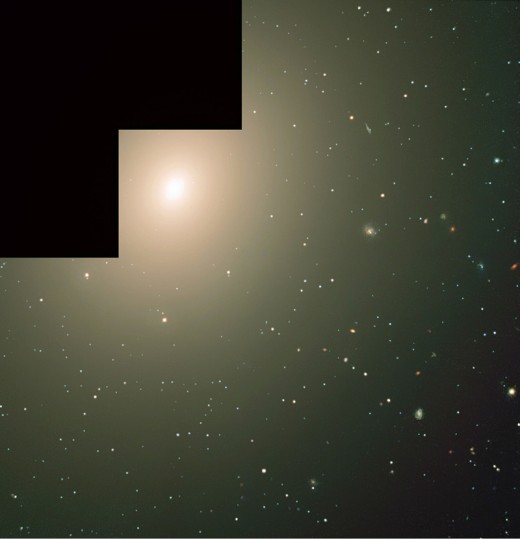Astronomy Picture of the Day
Discover the cosmos! Each day a different image or photograph of our fascinating universe is featured, along with a brief explanation written by a professional astronomer.
2002 July 4 

Posted on 07/03/2002 11:53:46 PM PDT by petuniasevan
Discover the cosmos! Each day a different image or photograph of our fascinating universe is featured, along with a brief explanation written by a professional astronomer.
2002 July 4 

Explanation: Elliptical galaxy NGC 4365 is old, probably about 12 billion years old. Like most elliptical galaxies, this galaxy was thought to be full of old stars too, its burst of star forming activity having long since ended. But combining data from the Hubble Space Telescope and the European Southern Observatory's ground-based Antu Telescope, a team of European and US astronomers discovered NGC 4365's surprising secret -- some of its star clusters are young. In this composite image, the galaxy's bright nucleus is at the upper left. NGC 4365's star clusters themselves appear as bright dots against a diffuse glow of unresoved starlight and fuzzy, distant background galaxies. The notched border outlines Hubble's WFPC2 camera field. Moving the cursor over the image identifies individual star clusters, with the relatively young (few billion year-old) clusters circled in blue, and the anticipated 12 billion year-old clusters circled in red. NGC 4365 is 60 million light-years away in the Virgo galaxy cluster.

As this was a "mouseover" annotated image, I could not post it as such to FR.
That HTML attribute is not allowed; instead I posted both images.
If you want to see the "mouseover" image (one changes to the other), you can use this LINK.
Whenever we get to thinking we understand the universe, we get a reality check.
The universe is not only stranger than we imagine, it's stranger than we CAN imagine.
Get on the APOD PING list! 

Happy Independence Day! :)
Thanks
Disclaimer: Opinions posted on Free Republic are those of the individual posters and do not necessarily represent the opinion of Free Republic or its management. All materials posted herein are protected by copyright law and the exemption for fair use of copyrighted works.